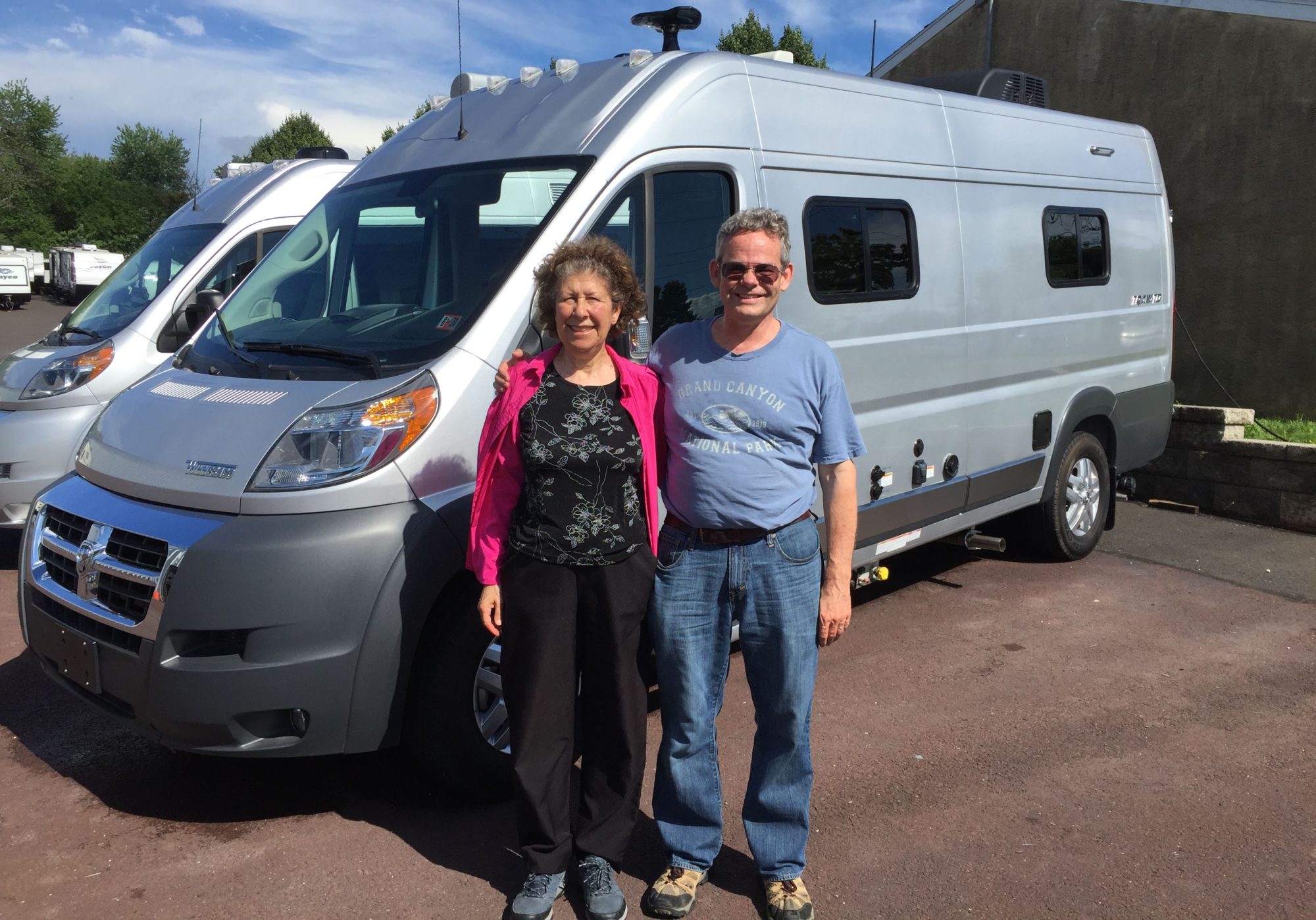Toronto (Hove St) – May 26
Leaving our RV with the dealer for repairs and the kayaks at the campground to avoid the drag while driving, we headed up to Toronto. We have done this trip dozens of times and it was uneventful.
Staying at my mother’s house on Hove Street is increasingly depressing. Her presence is fading, as we move things out. It is also increasingly difficult to live there – the internet has been discontinued, the dryer does not work, etc.
Saturday was clearout day. My brother Donald and sister-in-law Judy came to collect the last items they wanted from the house. I also collected a few items. We went out for dinner at one of our favorite north Toronto restaurants, Santos.
One thing that will be left behind is my chestnut tree. When we moved from our previous house on Whitburn to this house on Hove, my mother transplanted 2 trees. One was a striped maple which originally came from a campground in northern Ontario. My mother had always wanted this type of tree, which grows naturally only far north of Toronto, but as a conservationist, she would not disturb even the smallest seedling on a camping trip. However, at a site where new campsites were being put in, she was able to rescue a sapling, which grew to a fairly large tree once transplanted to Hove.
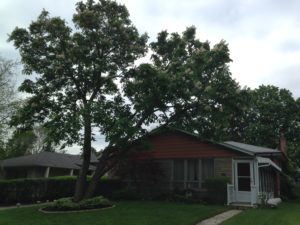 The other tree was a horse chestnut which was planted due to a misunderstanding. As a young child, I had been told that the chestnut trees were all dying due to chestnut blight. I did not understand that this was the American chestnut, not horse chestnut, and so I collected some of the plentiful horse chestnuts that can be picked up in the fall from the trees in downtown Toronto. Several sprouted but only one lived long enough to be put in the garden. It was perhaps 10 feet tall when we moved to Hove – it now towers over the house and my mother complained for years about the plentiful chestnuts it produces, and how the local squirrels dig up her garden to bury them. The gardener trimmed it back severely, which proved lucky a few years ago when a huge ice storm closed Toronto for several days and brought down many trees. But it lost a large limb last winter, and I will not be surprised if the new owners bring it down. (I am pleased to say that a project at Penn State, as well as other US universities, has successfully produced blight resistant American chestnut trees, which will soon be re-introduced to their original habitat.)
The other tree was a horse chestnut which was planted due to a misunderstanding. As a young child, I had been told that the chestnut trees were all dying due to chestnut blight. I did not understand that this was the American chestnut, not horse chestnut, and so I collected some of the plentiful horse chestnuts that can be picked up in the fall from the trees in downtown Toronto. Several sprouted but only one lived long enough to be put in the garden. It was perhaps 10 feet tall when we moved to Hove – it now towers over the house and my mother complained for years about the plentiful chestnuts it produces, and how the local squirrels dig up her garden to bury them. The gardener trimmed it back severely, which proved lucky a few years ago when a huge ice storm closed Toronto for several days and brought down many trees. But it lost a large limb last winter, and I will not be surprised if the new owners bring it down. (I am pleased to say that a project at Penn State, as well as other US universities, has successfully produced blight resistant American chestnut trees, which will soon be re-introduced to their original habitat.)
On Sunday we went to the McMichael Art Gallery in Kleinburg. When I was in high school and college I considered this a biking adventure from my parents house – about 10 miles on country roads through the farms. Although I think it is still possible to get there by side roads and bike paths, it is now part of the greater Toronto metropolitan area. The town itself has become very touristy.
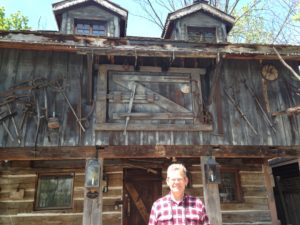 The gallery features the works of a group of famous Canadian painters – Tom Thompson and the Group of Seven. These artists mostly started as Canadian landscape painters, but then brought impressionism to the work. Growing up, I was most interested in Tom Thompson, who painted the northern forests where I spent my summers. (https://en.wikipedia.org/wiki/Tom_Thomson) I found it an almost painful evocation of my childhood to see some of these works, especially Thompson (who is not featured highly in the gallery but whose studio has been moved to the site and is in the photo) and, Lawren Harris, for whom they were having a special exhibit on contemporary artists. (http://www.ago.net/the-idea-of-north-the-paintings-of-lawren-harris)
The gallery features the works of a group of famous Canadian painters – Tom Thompson and the Group of Seven. These artists mostly started as Canadian landscape painters, but then brought impressionism to the work. Growing up, I was most interested in Tom Thompson, who painted the northern forests where I spent my summers. (https://en.wikipedia.org/wiki/Tom_Thomson) I found it an almost painful evocation of my childhood to see some of these works, especially Thompson (who is not featured highly in the gallery but whose studio has been moved to the site and is in the photo) and, Lawren Harris, for whom they were having a special exhibit on contemporary artists. (http://www.ago.net/the-idea-of-north-the-paintings-of-lawren-harris)
In the evening we went out for dinner with my younger brother Louis, who Down Syndrome. At birth his life expectancy was about 20. However, due to advances in medical care, he is now in a cohort of Down’s patients who are in their 60s. He enjoys a chicken dinner at the Swiss Chalet, and we always take him out when we are in town. This time, however, something went wrong. He did not want to go home. After a second cup of coffee, we were able to coax him into the car, but it was a bit harrowing.
On Monday we met with the estate sale agent, who immediately set to work on finding everything in the house. She has been working at it with her team ever since. We have only 3 weeks until the closing on the house, so fitting in the sale will be tight.
The way it works is that the agent goes through everything in the house, determining what can be sold and what is just rubbish. She might call in dealers for items such as artwork or specialty furniture. Besides the specialty items, everything else gets priced and then there is an estate sale, open to the public. After the sale, she brings in a dealer who buys bulk items. Anything left over at that point is either donated or trashed.
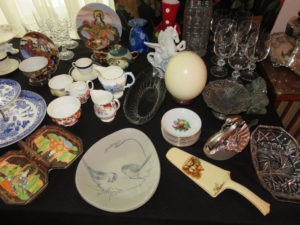 Closing out a house this way is probably the most demoralizing thing most of us will want our kids to do for us. We will want them to do it for two reasons: 1) most of us will prefer to stay in our homes until we die and 2) we hope they will outlive us. In any case, my mother’s house was very full. Firstly, she loved beautiful things and collected them on trips, from catalogues, antiquing with her friends, etc. Secondly, she and my father inherited things, especially china, from their families. (Since most of the family kept kosher, they had meat and milk dishes, cutlery and pots for both ordinary and Passover – 4 sets each.) And finally, while my mother was always happy to give thing away to friends and family, she hated to trash them or give them to garage sales. So unpacking the house is like an archeological dig – dishes I remember from my early childhood, my grandmother’s roasting pan. a photo of my great-great grandfather dressed as a Russian officer (although we are sure that Jews inducted into the csar’s army were the lowest of the low and never officers) as well as cake-plates and serving pieces that she collected. Every one of these reminds me of my mother in some way. But there is only so much room in the house, and my kids, came too late in life to see my mother use most of these items for entertaining, So, it all has to go. These were my mother’s memories, and to some extent my father’s, but they were also mine and it is hard to let them go.
Closing out a house this way is probably the most demoralizing thing most of us will want our kids to do for us. We will want them to do it for two reasons: 1) most of us will prefer to stay in our homes until we die and 2) we hope they will outlive us. In any case, my mother’s house was very full. Firstly, she loved beautiful things and collected them on trips, from catalogues, antiquing with her friends, etc. Secondly, she and my father inherited things, especially china, from their families. (Since most of the family kept kosher, they had meat and milk dishes, cutlery and pots for both ordinary and Passover – 4 sets each.) And finally, while my mother was always happy to give thing away to friends and family, she hated to trash them or give them to garage sales. So unpacking the house is like an archeological dig – dishes I remember from my early childhood, my grandmother’s roasting pan. a photo of my great-great grandfather dressed as a Russian officer (although we are sure that Jews inducted into the csar’s army were the lowest of the low and never officers) as well as cake-plates and serving pieces that she collected. Every one of these reminds me of my mother in some way. But there is only so much room in the house, and my kids, came too late in life to see my mother use most of these items for entertaining, So, it all has to go. These were my mother’s memories, and to some extent my father’s, but they were also mine and it is hard to let them go.
The agent made it quite clear that her preference is to have no-one living in the house while she is working. We can already see the awkwardness, since she will be selling the pots we are cooking with, the furniture we are sleeping on, the dishes we are eating on, etc. So we checked out the nearest RV parks and found that there is one right on the highway near Toronto airport, which is only a few minutes drive from my mother’s house. We decided to move there as soon as the RV has been repaired.
When I was growing up my parents tried to get out to a park each weekend, especially in the summer, but also for walks in the snow or toboganning. This was not as straight forward as it sounds, because my father often had to work during the weekend, he sometimes went to religious services on Saturday andd uring the school year my brother and I had Sunday school from 9 -12 on Sunday mornings. However, the Toronto Regional Conservation Authority maintained a number of small conservation areas which were all about 10 miles from the city boundary. We were heavy users of these areas with our friends, the Billers, and sometimes another set of friends, the Teitels (sometimes known as TAB). The routine was always the same – my mother made up tuna, salmon and egg spreads, which my brother and I would made into sandwiches, neatly cut and wrapped in wax paper. A cooler would be filled with sandwiches, hotdogs, cole slaw and potato salad and one car would be filled with 4 adults, 2 dogs, 4 kids, coolers, and folding lounge chairs.
Once there, we would have lunch and then the dads would sit in the car and listen to sports on the radio, while my mother would take us on one of the educational nature trails. Since we visited these parks frequently and my mother never failed at this, we kids knew all of the interpretive signs by heart. But my mother always acted as if the information was fresh and fascinating. Sports and hikes finished, all of us would go for a long walk with the dogs. And then the men would fire up the barbecue and we would roast our hotdogs and marshmallows. (We had never heard of s’mores.)
Nowadays, several of these conservation areas have added RV campsites and the city has grown outwards, so they are in the greater metropolitan area. This makes them very convenient – especially for people like us who are visiting the northern suburbs, rather than the downtown. On the other hand, the campsites do not have sewers, so we will have to be careful about water use.
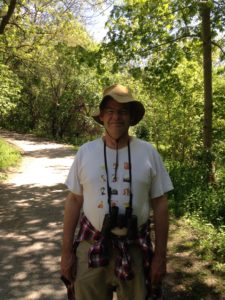 Toronto’s landscape was built by the glaciers of the last ice age. It is built on glacial morraines and cut by deep ravines, with 2 major river systems, the Humber and the Don. Tuesday morning Chuck worked and Tuesday evening I did, but Tuesday afternoon we took a long hike through a park that meanders through the West Don Valley. The park starts about half a kilometer from my mother’s house, so we walked to the park and then took the main trail. It seems that most Torontonians are scofflaws when it comes to leash laws, and Rumple was very happy to join the other hiking dogs off-leash.
Toronto’s landscape was built by the glaciers of the last ice age. It is built on glacial morraines and cut by deep ravines, with 2 major river systems, the Humber and the Don. Tuesday morning Chuck worked and Tuesday evening I did, but Tuesday afternoon we took a long hike through a park that meanders through the West Don Valley. The park starts about half a kilometer from my mother’s house, so we walked to the park and then took the main trail. It seems that most Torontonians are scofflaws when it comes to leash laws, and Rumple was very happy to join the other hiking dogs off-leash.
Wednesday I visited my friend Therese for much of the afternoon. We both managed to get parking tickets (along with a dozen other cars) for parking on the wrong side of the street. (If there had not been so many cars already parked, I would have read the parking signs more carefully.) It just goes to show that Torontonians sometimes do pay for being scofflaws.
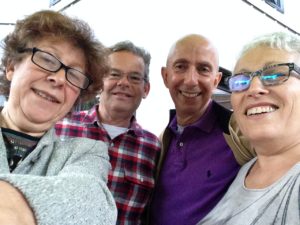 In the evening, we visited our friends Kathy and Salomon, who are recently retired and enjoying lots of travel and cooking. We had the benefit of Salo’s wonderful cooking skills, as well as a long evening walk with their dog and ours.
In the evening, we visited our friends Kathy and Salomon, who are recently retired and enjoying lots of travel and cooking. We had the benefit of Salo’s wonderful cooking skills, as well as a long evening walk with their dog and ours.
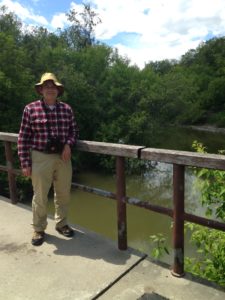
Salo recommended Glen Rouge conservation area as a place to walk the dog, so on Thursday we headed out there for another hike. It has very nice trails and we enjoyed the walk. It also has a very nice campground. However, unless we take the 401 with the RV, it is almost an extra hour of driving compared to the campground we selected, so we decided to stick to the less attractive but more convenient spot.
The transCanada highway, is highway 1. It goes coast to coast including a jog to become Toronto’s main street – Yonge Street. As traffic became worse, Canada built superhighways to supplement its main roads, adding “4” to the highway number. So, the 401 is the Toronto bypass for highway 1. However, Toronto has spread out to become a conurbation of multiple cities, each fairly large already. The 401 is now very congested, and the part that goes through greater Toronto is 8 lanes in each directions – 4 express and 4 “local”. Torontonians drive like New Yorkers, weaving among the lanes at high speeds. Perhaps some day we will be willing to do this in the RV. Mostly we avoid the 401 even when driving the car. Instead, we take the 407 which follows highway 7 north of the city and which is very convenient to my mother’s house. The campground we will stay at is at the intersection of 407 and 427 (near highway 27, of course).
Near my mother’s house is a cute-looking French restaurant. By the time we became aware of it, my mother had severe arthritis and was unable to negotiate the steps. (In fact, easy access is one of the reasons that Santos became a favorite.) We decided to give it a try, and were glad we did. Besides the fact that the charming staff all had charming French accents, the food was very good.
Friday morning both the estate sale agent and the real estate agent showed up. However, we needed to get to our RV dealer before the service department closed, so we had only brief discussions before taking off for Erie, PA.
